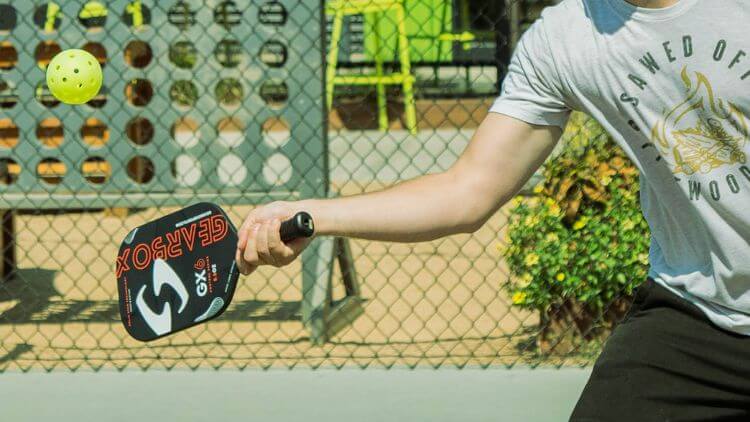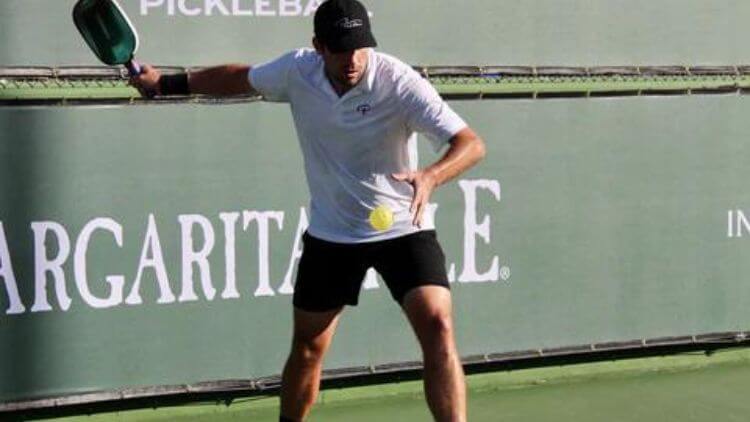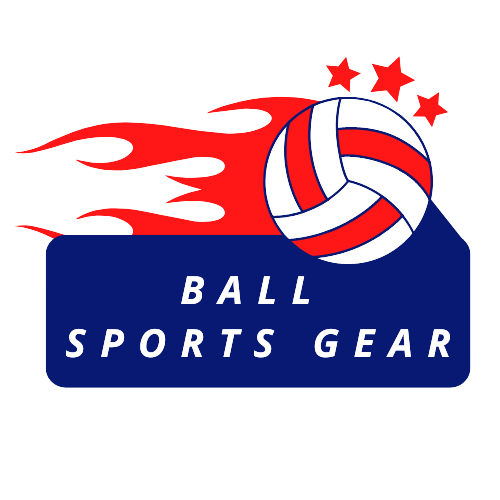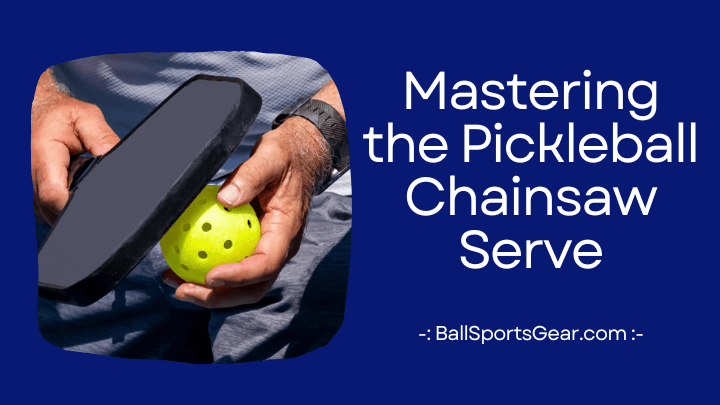The pickleball chainsaw serve is a unique and powerful technique that has gained popularity among players. With its distinctive spin and trajectory, this serve adds an element of unpredictability to the game. In this short introduction, we will explore the basics of the chainsaw serve pickleball and its impact on gameplay.
Step-By-Step Guide on How to Execute a Chainsaw Serve
Understanding the chainsaw serve pickleball:
Before diving into the execution, it’s important to understand the mechanics of the chainsaw serve pickleball. The chainsaw serve involves a slicing motion with your paddle, creating sidespin on the ball. This spin causes the ball to curve in flight, making it difficult for your opponents to anticipate its path.
Proper Grip and Stance:
To execute the chainsaw serve pickleball successfully, start with a firm grip on your paddle, ensuring control and stability throughout the serve. Adopt a balanced stance with your feet shoulder-width apart, allowing for a solid foundation and efficient weight transfer.
Ball Placement and Toss:
Position the ball slightly to the left or right of the center of your body, depending on whether you want to create left or right spin. The toss should be slightly in front of you and at a height that allows you to make contact at the optimal point.
The Slicing Motion:
As the ball reaches its apex, initiate the slicing motion by accelerating your paddle through the contact zone. Slice diagonally across the ball from left to right (or right to left) to create the desired sidespin. Focus on making clean contact with the ball’s side, ensuring maximum spin generation.
Follow-through and Placement:
After making contact, continue your follow-through smoothly, extending your arm towards the target area. Aim to keep the ball low over the net, preferably targeting the sidelines to increase the difficulty for your opponents. Practice different variations of placement to keep your opponents guessing.
Practice and Repetition:
Like any skill in pickleball, mastering the chainsaw serve pickleball requires practice and repetition. Dedicate time to refine your technique, focusing on consistency and accuracy. Start with slower serves and gradually increase the speed as you become more comfortable with the motion.
Advantages and Disadvantages of Using a Chainsaw Serve

A. Advantages of using a chainsaw serve:
Unpredictability and Spin:
The chainsaw serve involves generating a tremendous amount of spin on the ball, making it extremely unpredictable for the receiver. The combination of topspin and sidespin can cause the ball to bounce unexpectedly, making it difficult for opponents to anticipate its trajectory and react accordingly.
Offensive Pressure:
Due to the spin generated by the chainsaw serve, the ball tends to bounce higher, forcing the receiver into a defensive position. This provides an excellent opportunity for the server to take control of the point by capitalizing on a weaker return or setting up an aggressive follow-up shot.
Disrupting the Returner’s Rhythm:
The unique motion and spin of the chainsaw serve pickleball can disrupt the returner’s timing and rhythm, making it challenging for them to execute an accurate and well-placed return shot. This can lead to unforced errors and provide the server with an immediate advantage in the point.
B. Disadvantages of using a chainsaw serve:
Higher Risk of Errors:
Mastering the chainsaw serve requires time, practice, and precision. The exaggerated spin and motion involved in executing this serve also increase the likelihood of errors. Inconsistencies in ball placement or improper execution can result in missed serves or unintentional faults.
Vulnerability to Counterattacks:
While the chainsaw serve can be an offensive weapon, its high bounce and predictable trajectory can also make it an opportunity for skilled opponents to launch counterattacks. Experienced players may anticipate the serve and position themselves strategically to capitalize on the server’s aggressive approach.
Physical Strain and Fatigue:
Executing the chainsaw serve requires a significant amount of energy and physical effort. The exaggerated motion, spin generation, and the need for precise ball contact can lead to increased strain on the server’s body. Overuse or improper technique can potentially result in fatigue and decrease overall performance during a match.
| PROS | CONS |
| Unpredictability | Higher risk of errors |
| Enhanced spin | Requires practice and skill |
| Creates opportunities for control | Increased difficulty for beginners |
| Disrupts opponent’s rhythm | Requires adjustment for accuracy |
| Potential to win free points | Higher chance of being returned |
Please note that the above chart provides a general overview and individual experiences may vary. It is essential to consider personal playing style and skill level when deciding whether to incorporate the chainsaw pickleball serve into your game.
Strategies for Returning a Chainsaw Serve
Let’s take a look at statergies for returning a chainsaw serve.
A. Tips for Returning a Chainsaw Serve:
Observe the Spin:
The chainsaw serve derives its name from its side spin motion, which can make it difficult to anticipate and return. Watch the server’s paddle closely to determine the direction and intensity of the spin. This observation will help you prepare for the ball’s trajectory.
Adjust Your Stance:
Position yourself slightly to the side of the centerline, favoring the side where the spin is directed. This adjustment will give you a better angle to handle the spin and increase your chances of returning the serve successfully.

Use Soft Hands:
When returning a chainsaw serve, it’s crucial to maintain a relaxed grip on your paddle. This allows for more finesse and control over the ball. Use a gentle touch to absorb the spin and guide the ball back to the server’s side of the court.
Focus on Timing:
Timing is key when returning a chainsaw serve. Wait for the ball to reach its highest point before making contact. This timing will enable you to neutralize the spin and counteract its effect.
Aim for Depth and Placement:
Instead of trying to overpower the chainsaw serve, focus on placing your return deep into the server’s court. This strategy can disrupt their rhythm and give you more time to recover for the next shot. Aim for the corners or areas away from the server’s reach to keep them on the defensive.
B. Common Mistakes to Avoid when Returning a Chainsaw Serve:
Overreaching:
One of the common errors when returning a chainsaw serve is overreaching. Stretching too far to reach the ball can result in a weak or inaccurate return. Instead, focus on footwork and positioning to allow for a balanced and controlled return.
Panic Reactions:
The unique spin of a chainsaw serve can induce panic in some players, leading to rushed and uncalculated shots. Stay composed and trust your skills. By maintaining a calm mindset, you can make better decisions and execute effective returns.
Neglecting Communication:
In doubles play, effective communication with your partner is crucial when facing a chainsaw serve. Coordinate your movements and communicate about who will take the shot to avoid confusion and maximize your chances of returning the serve successfully.
Failure to Adapt:
Every chainsaw serve may differ in terms of spin and speed. Failing to adapt to the specific serve you are facing can hinder your ability to return it effectively. Stay observant and make adjustments based on the server’s technique.
Frequently Asked Questions
A: The pickleball chainsaw serve is a unique serving technique where the player uses an exaggerated sidearm motion, resembling the motion of a chainsaw. It involves a slicing action that imparts spin on the ball, making it challenging for the receiver to handle.
A: To execute a chainsaw serve, the player stands to the side of the court, holds the paddle with a firm grip, and swings the paddle in a chainsaw-like motion while striking the ball. The slicing action generates spin, causing the ball to curve and bounce unpredictably.
A: The legality of the chainsaw serve depends on the specific rules set by the governing organization or tournament. While some associations permit the chainsaw serve, others consider it an illegal serve due to the extreme spin and potential for excessive pace. It is important to check the rules before using this serve in a competitive setting.
Conclusion
The pickleball chainsaw serve offers players an opportunity to shake up the dynamics of the game with its spin and speed. While it may require practice and skill to execute effectively, mastering this serve can give players a competitive edge and keep opponents on their toes. Whether you’re a beginner exploring new techniques or an experienced player looking to diversify your game, the chainsaw serve in pickleball can be a valuable addition to your repertoire. So, grab your paddle and start practicing to unleash the power of the chainsaw serve on the pickleball court.

